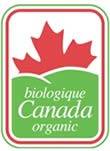
Pages in this Folder:

Related Folders:
See also Department Site Map
Publications:
Market-related videos
Comments?
For the basics, see
- Website & Privacy Policies
- How To Get Involved
- The Role of the Park
Search options:
Department Site Map
Custodians:
posted on August 20, 2008
Canadian Organic Regulations
By: Doug DiPasquale
Published: Aug 5th 2008
Source: AOL, CanadaAs of December 14, 2008, you will see a new label appearing on organic products in grocery stores. But the new Canada Organic logo is more than just a colourful new sticker - any product which claims to be organic will now need to comply with the requirements of the Organic Products Regulations overseen by the Canadian Food Inspection Agency (CFIA).
From 1999 Canada had strictly voluntary national organic standards in place and private regulatory bodies would certify products as organic. As of December 2006 the Organic Production Standards passed into law, where any product claiming to be organic, or have organic ingredients, needed to comply with the standards put forward by the federal government. There has been a two-year transition period for growers and manufacturers to get their operations up to these national standards. As of this December, the transition period is over.
According to the CFIA the purpose for the adoption of a federal regulatory system is threefold - to provide protection for the consumer from deceptive or misleading marketing, to support domestic market development enabling more growers to adopt organic, sustainable practices and to facilitate international market access (particularly the European Union and United States).
These Canadian Organic Standards include everything from sustainable practices like crop rotation, mulching, composting and water management to the prohibition of GMOs, chemical pesticides, fertilizers and herbicides. You can read these standards, as well as the Permitted Substances List here.
In the past there has been a lot of confusion about what the label "organic" really means, and whether an "organic" label is inherently trustworthy. But now, when you see the Canada Organic logo, it will mean that the product has organic content that is greater than 95% and that this is backed up by the CFIA, the agency that has been responsible for regulating food safety at a national level for the last decade.
But why only 95% organic? Why not 100%? This is to allow room for some ingredients which are not agriculturally based or are not available in organic form (like added minerals, for example). It's not a loop hole, as this less than 5% of the ingredients are still not allowed to involve non-organic practices like genetic modification or irradiation. Products that contain 70-95% organic ingredients are allowed to state the percentage on the label (for example, "contains 86% organic ingredients") and those with less than 70% organic ingredients are only allowed to state which of the ingredients are organic in parentheses on the ingredients list.
So look for the new stickers on December 14. It may be a bit premature to proclaim the organic guessing game over, but we're certainly in the final inning.
The Healthy Foodie is Doug DiPasquale, Holistic Nutritionist and trained chef, living in Toronto. You can email him with questions at dugdeep@gmail.com.
|
Read more News. | ||





 Printer friendly version
Printer friendly version
